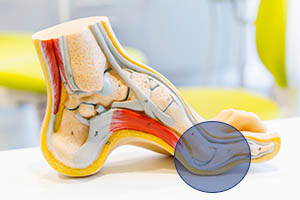
Bunion Correction Surgery
A bunion, or hallux valgus, is a large and painful lump that appears at the base of the big toe on the joint known as metatarsophalangeal (MTP). It typically occurs due to a congenital disability, a specific foot type or from frequently wearing narrow shoes that squash your toes. The result is a shift in the alignment of your foot that causes the bones to shift and your big toe to point towards your smaller toes.
What is bunion correction surgery?
Bunion correction surgery is also known as bunionectomy and involves several techniques, some more invasive than others. The procedure typically involves making an incision at the big toe joint to realign the bone.
Dr Alexander will endeavour to be as minimally invasive as possible, but surgery is often the most effective treatment.
When is correction surgery necessary?
An existing bunion can lead to an array of issues that impact your mobility and daily comfort. For example, bunions affect the alignment of your foot, making walking, exercising and wearing shoes difficult. They can also cause extreme discomfort and pain.
Dr Alexander may recommend bunion correction surgery in instances where:
- The pain interferes with your daily life
- There is constant swelling and inflammation that has not subsided
- The big toe has drifted to the smaller toes
- You have limited movement of the big toe
What happens during bunion correction surgery?
Dr Alexander performs bunion correction surgery while you are under general anaesthesia, with your foot and ankle under local anaesthesia. During the procedure, Dr Alexander will make an incision in the bunion and realign the bone using metal plates, screws and wires. He may also remove pieces of bone, ligaments and tendons to straighten the bone.
Once complete, he will stitch the incision and dress the area with a bandage. The entire procedure can take several hours, depending on the severity of the bunion.
Recovery after bunion correction
After surgery, you can return home on the same day but should avoid placing any pressure on your foot. The staff will help you into a wheelchair, and you will need someone to drive you home. Dr Alexander will provide you with a detailed guide on recovering at home, highlighting the following:
- Keep your foot elevated to prevent swelling
- Regularly redress your bandages and ensure the wound stays dry
- Do not put pressure or weight on your foot
- Complete your prescribed medication courses
It's important to note that you will need assistance at home during your recovery.
Contact Us
GIVE US A CALL:
CHAT ON WHATSAPP:
MAIL US:
LIFE GROENKLOOF HOSPITAL:
Room 104, Medical Centre West, 50 George Storrar Drive, Groenkloof
RASLOUW PRIVATE HOSPITAL:
Suite 105, Cnr R55 and Lochner avenue, Raslouw, Centurion

